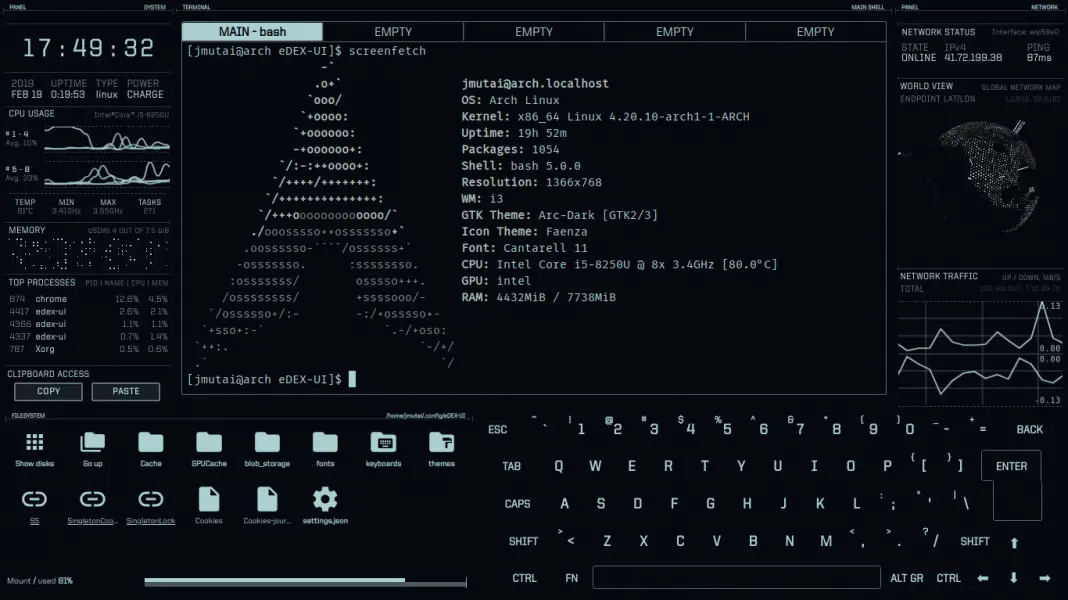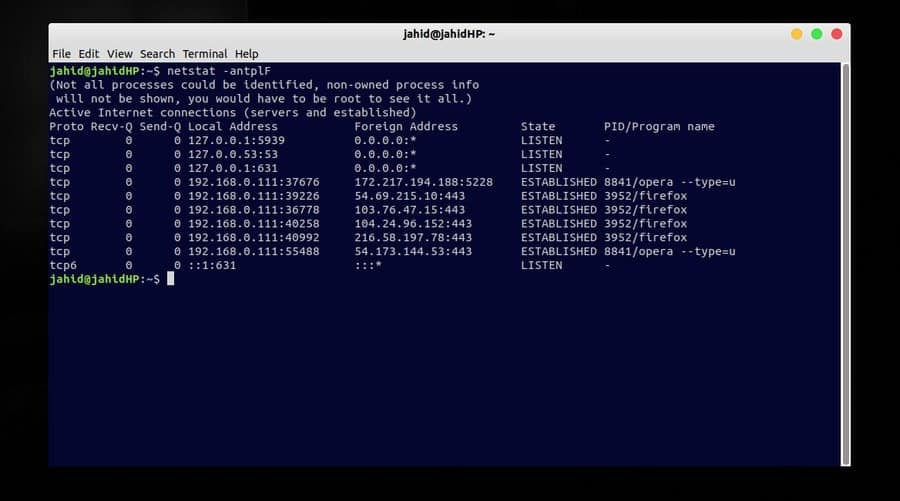

#OPEN TERMINAL IN LINUX PASSWORD#
Just enter your password and then press Enter. When typing your password, you won't see anything. When you run a command with sudo in front of it, you'll be prompted for your password. Once open, you should see the typical terminal screen. Below is an example of the same command, ran once without sudo and once with.
#OPEN TERMINAL IN LINUX UPDATE#
For example, to check for updates you will need to prepend the command apt update with sudo. In most cases, the Terminal prevents you from damaging your system by requiring authentication or elevated privileges to run certain commands. At any time, you can press the Tab key to have the Terminal guess the completion for your entry, or twice to show all possibilities. To list all files and folders in the current directory, type ls To change directories (folders), type cd. In many cases, you won't need to move around to run a command. A tilde (~) indicates the user's home directory.Īnything entered after this symbol is interpreted as a command.Īnything that is typed into the Terminal is shown after the prompt.Ī visual indicator of the user's current position in the Terminal.Īs you change folders and move throughout your computer, the prompt will change in response. and then you can use the command below to open up a new terminal window: xdotool key ctrl+alt+t.
#OPEN TERMINAL IN LINUX INSTALL#
Basically, the Terminal can only see into this folder. To do so, you have to install xdotool with the command: sudo apt-get install xdotool. Commands entered and files modified are scoped to this folder, unless providing an absolute path to another file or folder, or if the command is available in the user's $PATH. The current folder that this Terminal resides in. Unless you've connected to a remote machine via SSH, this will be the same name as your computer. The hostname of the system currently in use by the Terminal. The username of the person currently logged in to this Terminal. It might not look like much, and at first glance there might not appear to be much information, but the Terminal is one of the most powerful tools at your disposal. To open a Terminal, tap the Super Key, to search your computer and type the word Terminal. The Terminal is also referred to as the shell, command line, prompt, or command prompt. The quickest way to install, remove or update applications is through the Terminal. Some will ask for input, and others may just return you to a prompt. Many commands will print information to the screen. When you type a command, you're basically telling your computer to do something very specific. I.e., for bettercap you may use the -eval Parameter: bettercap -iface wlan1mon -eval 'events.stream off wifi.The Terminal is an interactive, text-based interface for your Operating System. Or, depending on the command, find a more appropriate way to provide it with inputs or start it with the respective parameters, since the above may not work in all cases. If you need to enter input into other commands you may try to simply echo and pipe it to them: echo "events.stream off" | bettercap -iface wlan1mon on startup - but still want the output to be in a new window, start the script with xfce4-terminal -e /path/to/your/script.sh, see as mentioned by αғsнιη. This Python terminal functions just like the Python IDLE that you have. If you need to start the script automatically - e.g. Just typing in, python3, allows us to open up the Python terminal to run Python3 code. If you want the output of the script to be visible in a xfce4-terminal window you can just open one manually and start the script in it. I would assume all desktops have it available. I also use kde and gnome occasionally but I have not tested those file managers to see if the 'open terminal' option is available.

You are done Next time you login, the terminal app will be launched. If you set up the 'open terminal' option in the file manager, you can right click on any directory and select 'terminal' and a terminal window opens in that directory. In the 'command' field, type gnome-terminal. # no sleep required since the commands are executed one after another, Click on the Startup Applications option. If the username on your local machine matches the one on the server you are trying to connect to, you can just type: ssh hostipaddress And hit Enter. The only problem is that at the start of the script requires a terminal to be opened (by the script) and then to continue running the script. If you simply want to execute the commands as a script, you can put them there directly: #!/bin/bash Open the SSH terminal on your machine and run the following command: ssh yourusernamehostipaddress. However, what I think you should actually be doing is to rethink your whole approach since it looks overly complicated to achive what you're propably after! (unless there re some special requirements you didn't mention yet) Sleep 5 # wait for terminal window to be ready In order to open a xfce4-terminal and continue running your script you can just start the command in the background like so: #!/bin/bash


 0 kommentar(er)
0 kommentar(er)
